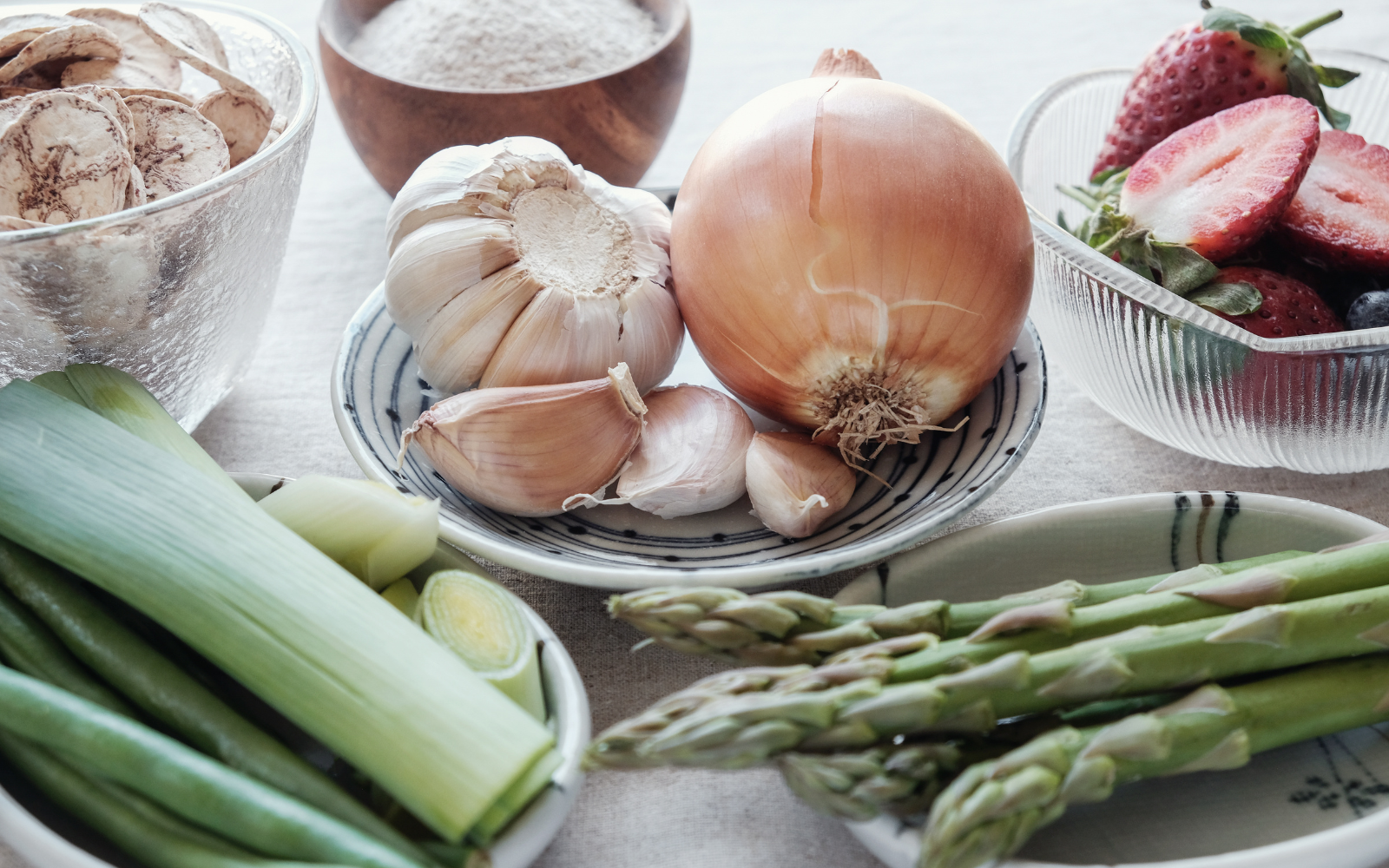I had a baby several months ago and entered into a messy, sleep-deprived love haze, out of which I am only just beginning to emerge. Like me, my beautiful boy is happiest when his belly is full. With some luck, I have had the time and breastmilk to oblige him. As something of a scientist and a generally curious person, I dedicated some time to find out more about breastmilk and bolster my commitment (breastfeeding takes a lot of time and effort).
Breastmilk: A Variable Elixir of Life
Breastmilk is a magical thing and part of its magic is its variability. No two breastmilks are identical and even two samples of the same milk from the same mother during the same feed will have different concentrations of “goodies.” According to [1], this variability can be categorized in three ways: as lactation-based or determined by infant or maternal factors.
Lactation-based variability includes the stage of lactation; the first milk produced by a new mom is a thick, yellow liquid called colostrum, for example; foremilk (beginning of a feed) or hindmilk (end of a feed); breast chosen; and whether or not the mother is suffering from mastitis (mothers with mastitis have higher concentrations of putrescine in their milk [2].
Infant factors or infant needs are determined by type of birth, age, whether or not s/he is sick, and the time of day—feeds later in the day purportedly contain more of the sleep-aid melatonin, for example. More of this variability can be explained by maternal factors including things a mom cannot control like her genetics, ethnicity, and age, and others that she can like her nutritional status and/or her diet.
While this is an extensive list, it is unlikely to be exhaustive. What are the impacts of pollution or ambient temperature on breastmilk, for example? Some of these differences may be captured by a fourth category, geography, discussed in the context of polyamine concentrations below.
Health Benefits of Breastmilk
Beyond its ability to fill baby bellies, breastmilk also aids in intestinal maturation and development of the immune system, which have their own follow on effects. For example, breastmilk-enhanced intestinal maturation reduces intestinal permeability and has been shown to reduce the risk of developing food allergies [3].
And it's not only babies that benefit... Kourtney Kardashian (also a new mother!) recently publicised that she drinks her own breastmilk when she feels run down and I'm sure you've heard of athletes drinking breastmilk in a hope to increase muscle growth. After all, breast milk contains all of the essential nutrients needed for a baby to grow in their first months of life, which includes polyamines!
Polyamines in Breastmilk
Essential for both intestinal integrity and immune system function are polyamines—spermidine, spermine and putrescine—found in breastmilk. Not unlike other components of breastmilk, concentrations of each of the polyamines in breastmilk vary and can have varying effects.
In one study, for example, babies who consumed breastmilk with higher spermine concentrations during the first month of life had lower incidence of food allergies at age five [4]. Below, I present some of the studies that have examined the variance of polyamine concentrations in human breastmilk.
As I suggest above, geography could determine and capture influencing factors like pollution and ambient temperature, but it’s likely to also include other maternal factors already discussed like ethnicity and diet. A study by Gomez-Gallego et al. (2017) [5] examined the polyamine concentrations in mature breastmilk from 78 women from four geographic locations; they found significant differences along geographic lines. For example, they found higher levels of spermidine in the breastmilk of Finnish mothers when compared with breastmilk from other source countries (Spain, South Africa, and China). It’s likely then that where you live influences the milk you produce.
Immediately after birth, infant growth and development is most rapid and its possible that polyamine needs are highest. A study by Plaza-Zamora et al. (2013) [6] compared polyamine concentrations in the first month of lactation for preterm babies (30 women) and full-term babies (12 women). They found that levels of polyamines, spermidine and spermine particularly, were highest for those with preterm babies. One potential explanation for this is preterm babies have even less developed immune systems and GI tracts than full-term babies; this higher need for polyamines is then reflected in the breastmilk.
You Are What Your Mom Eats
While polyamines are produced naturally in the body, bodily levels can be increased by polyamines found in food and supplements. To date, only two studies have looked at the mother’s diet and its impact on polyamine concentration in breastmilk. The first, by Atiya-Ali et al. (2014), [7] found a positive association between the polyamine intake and the concentration in breast milk. The association was strongest for spermidine and putrescine and weakest for spermine. In the second study, also led by Ali (2013) [8], obese mothers who participated in a nutritional intervention—including higher consumption of fruits and vegetables that have high polyamine content—increased the polyamine concentration in their breast milk.
The sample sizes for both of these studies, 52 and 50 mothers and babies, respectively, are small. Nevertheless, I have no reason to doubt that what you eat can impact the breastmilk you produce and the health effects it has for your baby. Because diet is one of the few things that I can control in terms of the breastmilk I produce, I do my best to seek out foods high in polyamines like edamame, mushrooms, and spinach to help my son develop a strong gut and immune system [9].
Spermidine Supplements
To my knowledge, there are no studies that gave mothers polyamine supplements to see how it influenced their breastmilk or directly supplemented babies with polyamines. But, experiments with animal models have shown that the direct supplementation with polyamines have positive health effects. In a study by Perez-Cano et al. (2010) [10], for example, newborn rats who were supplemented with spermine and spermidine directly, had higher gut weight and length suggesting a more mature gut structure than their counterparts. Similarly, spermine and spermidine administered in the postnatal period induced maturation of multiple types of immune cells.
Does Infant Formula Contain Polyamines?
I began infant formula with my daughter at six months of age after my breasts decided to no longer produce milk (I imagine them raising tiny white flags in surrender). At the time, my requirements for her formula included no palm oil and an organic and local milk source. I didn’t consider things like polyamine levels (nor am I sure now how to determine this without an ultra-high performance liquid chromatography machine). In my internet meandering though, I was happy to find that infant formula does include polyamines albeit at a lower level. A paper by Muñoz-Esparza et al. (2021) [1], for example, found that all 15 infant formulas examined contained spermidine and 86% had putrescine. Spermine, however, was only found in two of the formulas. When compared to that of breastmilk (from six mothers), they found that, on average, infant formulas had much lower concentrations of total polyamines (3% of the values found in breastmilk) and much higher levels of putrescine.
There are only a few studies that examine the polyamine profiles of infant formula. Among them, a study by Gómez-Gallego et al. (2016) [11] determined that the polyamine concentration found was determined by the milk’s raw material (infant formula is produced from cow milk, rice, and soy, for example) and by the manufacturing process rather than conscious addition. Due to the variability of polyamines found in breastmilk, it’s hard to say the optimal or required level for all babies; but, authors like Muñoz-Esparza et al. (2021) [1] do call for formula makers to match polyamine levels more closely to human breastmilk.
Big Happy Bellies
There’s no competing with breastmilk. It’s the gold standard of nutrition for infants and small children (World Health Organization) [12]. From the studies above, however, concentrations of “goodies” like polyamines in breastmilk can be improved by diet. Therefore, I will continue to eat lots of fruit and vegetables and breastfeed as long as I am able. But, my first priority remains to keep my baby happy and healthy and that requires a full belly. When I make the transition to formula and solids, I’m happy to know that he won’t miss out on the gut and immune help offered by polyamines.
References
1. Muñoz-Esparza, N. C., Comas-Basté, O., Latorre-Moratalla, M. L., Veciana-Nogués, M. T., & Vidal-Carou, M. C. (2021). Differences in Polyamine Content between Human Milk and Infant Formulas. Foods (Basel, Switzerland), 10(11), 2866.
2. Perez, M., Ladero, V., Redruello, B., Del Rio, B., Fernandez, L., Rodriguez, J. M., ... & Alvarez, M. A. (2016). Mastitis modifies the biogenic amines profile in human milk, with significant changes in the presence of histamine, putrescine and spermine. PLoS One, 11(9), e0162426.
3. Muñoz-Esparza, N. C., Vásquez-Garibay, E. M., Guzmán-Mercado, E., Larrosa-Haro, A., Comas-Basté, O., Latorre-Moratalla, M. L., Veciana-Nogués, M. T., & Vidal-Carou, M. C. (2021). Influence of Breastfeeding Factors on Polyamine Content in Human Milk. Nutrients, 13(9), 3016.
4. Peulen, O., Dewé, W., Dandrifosse, G., Henrotay, I., & Romain, N. (1998). The relationship between spermine content of human milk during the first postnatal month and allergy in children. Public health nutrition, 1(3), 181–184.
5. Gómez-Gallego, C., Kumar, H., García-Mantrana, I., du Toit, E., Suomela, J. P., Linderborg, K. M., Zhang, Y., Isolauri, E., Yang, B., Salminen, S., & Collado, M. C. (2017). Breast Milk Polyamines and Microbiota Interactions: Impact of Mode of Delivery and Geographical Location. Annals of nutrition & metabolism, 70(3), 184–190.
6. Plaza-Zamora, J., Sabater-Molina, M., Rodríguez-Palmero, M., Rivero, M., Bosch, V., Nadal, J. M., … Larqué, E. (2013). Polyamines in human breast milk for preterm and term infants. British Journal of Nutrition, 110(3), 524–528. doi:10.1017/S0007114512005284
7. Atiya Ali, M., Strandvik, B., Sabel, K. G., Palme Kilander, C., Strömberg, R., & Yngve, A. (2014). Polyamine levels in breast milk are associated with mothers' dietary intake and are higher in preterm than full-term human milk and formulas. Journal of human nutrition and dietetics : the official journal of the British Dietetic Association, 27(5), 459–467. https://doi.org/10.1111/jhn.12156
8. Ali, M. A., Strandvik, B., Palme‐Kilander, C., & Yngve, A. (2013). Lower polyamine levels in breast milk of obese mothers compared to mothers with normal body weight. Journal of Human Nutrition and Dietetics, 26, 164-170.
9. Muñoz-Esparza, N. C., Latorre-Moratalla, M. L., Comas-Basté, O., Toro-Funes, N., Veciana-Nogués, M. T., & Vidal-Carou, M. C. (2019). Polyamines in Food. Frontiers in nutrition, 6, 108. https://doi.org/10.3389/fnut.2019.00108
10. Pérez-Cano, F. J., González-Castro, A., Castellote, C., Franch, A., & Castell, M. (2010). Influence of breast milk polyamines on suckling rat immune system maturation. Developmental and comparative immunology, 34(2), 210–218. https://doi.org/10.1016/j.dci.2009.10.001
11. Gómez-Gallego, C., Recio, I., Gómez-Gómez, V., Ortuño, I., Bernal, M. J., Ros, G., & Periago, M. J. (2016). Effect of processing on polyamine content and bioactive peptides released after in vitro gastrointestinal digestion of infant formulas. Journal of Dairy Science, 99(2), 924-932.
12. World Health Organization. (n.d.). Breastfeeding. World Health Organization.





Leave a comment
All comments are moderated before being published.
This site is protected by hCaptcha and the hCaptcha Privacy Policy and Terms of Service apply.